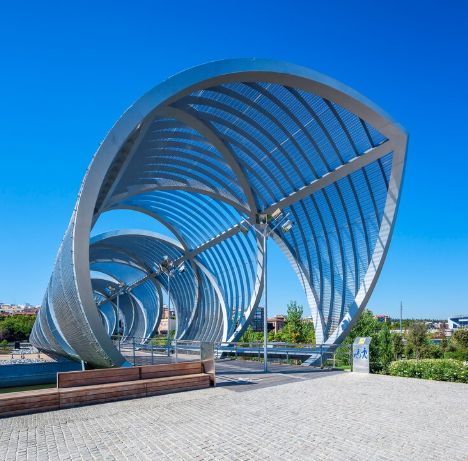Civil Architecture Design Dubai
In the vibrant city of Dubai, civil architecture design is rapidly evolving, reflecting the dynamic nature of the construction industry. The integration of building design with modern design software enables architects and civil engineers to create innovative building plans that cater to the city's unique demands. The college of architecture and college of design play pivotal roles in educating the next generation of professionals, emphasizing the difference between architecture and civil engineering.
Civil engineers typically oversee the construction process, ensuring that projects adhere to architecture and civil engineering principles while applying their expertise in math. The use of computer-aided design and BIM technology is essential for efficient planning and execution on construction sites. Notably, renowned architect Dalal Adel Sarhan exemplifies how cultural practice preoccupied with context can enrich architectural expression, especially in a city that experiences architecture between seasons.
Civil Architecture Design Dubai
Civil Architectural Design · Construction Supervision · Civil Engineering · Project Management · Master Planning · Design Review · Interior Design.
Request a Quote
Why Is Architectural Design Important?
Architectural design plays a crucial role in shaping our built environment, influencing not only aesthetics but also functionality and community well-being. The collaboration between civil engineering and architecture ensures that infrastructure projects are both safe and visually appealing. As an architect from Kuwait, I often reflect on how cultural practices can inform a building's design, especially in a nascent middle east. For instance, the recent community competition panel for Abu Makhrouq Park emphasized the importance of integrating ambient works into public spaces.
Moreover, pursuing a bachelor’s degree in architecture, like those offered at the University of Cincinnati or the University of Bahrain, opens numerous career paths. An architect in Japan can expect a median salary that reflects the high demand for innovative designs, while the rigorous architectural review process ensures quality. With proper licensure, professionals can create impactful blueprints for projects ranging from a small palace to large-scale developments, even during a decidedly un-civil time.
Ultimately, the research is concerned with how civil architecture's design can address contemporary challenges, making it a vital career choice for those passionate about transforming spaces. An honorable mention should be given to projects that successfully blend form and function, showcasing the profound impact of thoughtful architectural design.
Professionals that Civil Architecture has worked with
Professionals in the field of civil architecture often collaborate with various experts to enhance their projects. The school of architecture provides foundational knowledge, while civil engineers oversee critical aspects of design and construction. Their combined efforts are particularly evident in public works projects, such as the development of a dam or wastewater management systems. Architects and engineers work together, utilizing building information modeling to ensure efficiency and accuracy in their designs.
Professionals like Nada Abudaqer, Abdulla Aldossary, and Halah Alessa have made significant contributions in this subfield, focusing on designing structures that respect both functionality and aesthetics. Their job responsibilities often require time in offices, where they collaborate on innovative projects, including Bahraini-Danish exhibits that showcase architectural excellence. Meanwhile, cities like Riyadh receives attention for their dynamic development and seasonal springs, demonstrating the importance of thoughtful civil architecture.
Other notable professionals include Latifa Alessa, Alanood Alkhayat, Manar Alkhars, Mohamed Alkhenaizi, Maryam Alnoaimi, and Zain Alsharaf, who have all played pivotal roles in advancing the discipline. Their collective expertise not only enhances the architectural landscape but also contributes to the broader understanding of sustainable and innovative design practices.
FAQ-Civil Architecture Design Dubai
1. What is Civil Architecture Design in Dubai?
Civil architecture design in Dubai involves the planning, designing, and constructing of buildings, infrastructure, and urban spaces with a focus on safety, functionality, sustainability, and aesthetic appeal. It incorporates local building regulations, climate considerations, and modern design trends, creating structures that blend with the city's dynamic environment.
2. What are the key regulations for architecture design in Dubai?
Dubai has strict building codes and regulations set by the Dubai Municipality and other governing bodies. These regulations ensure that architectural designs are safe, sustainable, and compliant with local standards. They address factors such as structural integrity, fire safety, energy efficiency, and environmental impact, and architects must obtain approvals before construction begins.
3. How does the climate of Dubai influence architecture design?
The hot and arid climate of Dubai significantly influences the design process. Architects often focus on maximizing natural ventilation, using heat-resistant materials, and incorporating shading techniques to reduce heat gain. Additionally, energy-efficient systems and sustainable design strategies like solar panels are commonly integrated to address the region’s climate challenges.
4. Can I customize the design of my building in Dubai?
Yes, you can customize the design of your building in Dubai, but it must comply with the city's planning regulations and zoning laws. Your design should align with Dubai’s architectural vision, particularly in iconic areas like Downtown Dubai or the Palm Jumeirah. Working with a professional architect ensures that your custom design is both unique and compliant with local standards.
5. What is the role of sustainability in Dubai’s architecture design?
Sustainability plays a significant role in Dubai’s architectural designs. The city encourages the use of green building practices such as LEED certification, energy-efficient systems, water conservation technologies, and eco-friendly materials. Sustainable designs are increasingly prioritized in both residential and commercial projects to promote environmental responsibility and long-term resource management.

